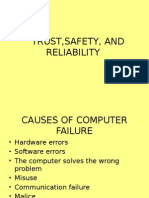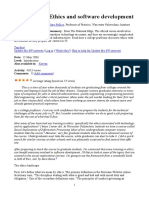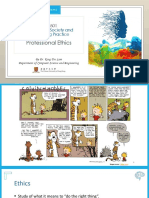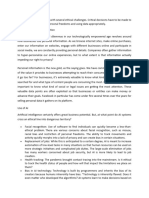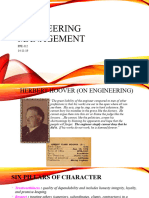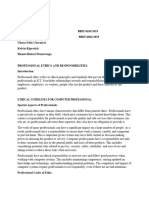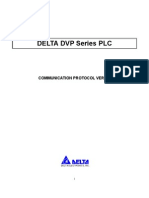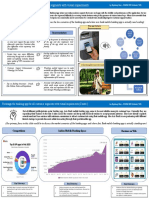0% found this document useful (0 votes)
22 views11 pagesLecture 10
The document discusses ethical dilemmas in engineering, highlighting conflicts such as safety vs. cost, privacy vs. security, and professional duty vs. organizational pressure. It provides examples, including the Therac-25 incident and the Volkswagen emissions scandal, illustrating the consequences of unethical decisions. The document emphasizes the importance of ethical frameworks and transparency in resolving these dilemmas to protect public safety and professional integrity.
Uploaded by
kamruzamanshuvo24Copyright
© © All Rights Reserved
We take content rights seriously. If you suspect this is your content, claim it here.
Available Formats
Download as PDF, TXT or read online on Scribd
0% found this document useful (0 votes)
22 views11 pagesLecture 10
The document discusses ethical dilemmas in engineering, highlighting conflicts such as safety vs. cost, privacy vs. security, and professional duty vs. organizational pressure. It provides examples, including the Therac-25 incident and the Volkswagen emissions scandal, illustrating the consequences of unethical decisions. The document emphasizes the importance of ethical frameworks and transparency in resolving these dilemmas to protect public safety and professional integrity.
Uploaded by
kamruzamanshuvo24Copyright
© © All Rights Reserved
We take content rights seriously. If you suspect this is your content, claim it here.
Available Formats
Download as PDF, TXT or read online on Scribd
/ 11


